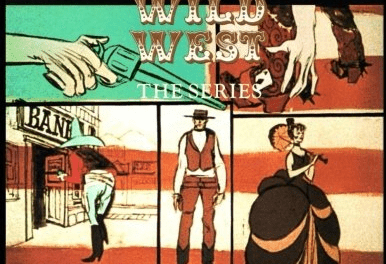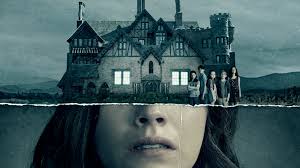In Matt Hills’ 2002 book Fan Cultures, he theorises the relationship between fandom and academia, in particular the way academia and fandom are often imagined as being mutually exclusive with academia, the ‘good subject’, dependent upon the fan as its ‘other’ in order to affirm its subjectivity and institutional legitimisation. The problem with ‘coming out’ as a fan is to be consistently devalued in academic discourse, a problem that dogs most fan scholars to this day.1 It was an issue that I kept returning to over the course of a day spent at Nordicana 2014 as I hopelessly teetered between my role as a TV scholar, there to dispassionately research the Nordic TV industry, or the star-struck fan hoping to get close to the latest batch of Nordic stars.
For those of you not familiar with the whole Nordicana movement, it is a weekend devoted to the fandom of all things Nordic, books, food, clothes, cinema and, for many the most important part – the TV series. Both Matt Hills, Sarah Niblock (whose blog on her day can be found here) and I attended the first Nordicana, which was held in the Farmiloe building, a derelict warehouse in Clerkenwell, in June 2013.
The line-up was impressive if the setting was not. I missed Saturday’s star turn, the Sidse Babett Knudsen interview, but attempted to get a good seat on the Sunday Borgen session by queuing for over an hour to witness what Mark Lawson described as ‘the biggest panel that he had ever attempted to interview’. The panel consisted of Adam Price (TV chef and creator of the series), Lars Knutzon (Finance Minister, Bent Sejrø, in the show) Jeppe Gjervig Gram (writer) Ingolf Gabold (former head of tv-drama, DR), Jesper W. Nielsen (director), Lone Theils (London correspondent of Politiken), Paula Milne (writer The Politician’s Husband) and Kath Mattock (script editor, and producer of BAFTA-winning Murder with Birger Larsen). Despite my second row seat, the screening that preceded the Q & A was practically unwatchable. The English sub-titles well down below the field of vision and blocked by anyone sitting in the front row. However, I did manage to learn quite a lot about the writing, production and distribution of Borgen which, after all, was the reason for my visit in the first place
I mention this as I had hoped that Nordicana 2014 would have learned from the mistakes of last year.
As I queued on Brick Lane, along with hundreds of others, sucking at an Americana and shivering in the February chill, I hoped that the organisation of this year’s event would be better than last. Eventually gaining entrance to the Truman Brewery (after a brief glimpse of Saga’s famous Porsche parked at the front of the venue) and queuing for another twenty minutes – this time for a wristband – at last I got what I thought would be a good seat. Although it did look as if we would at least be able to read the subtitles this year, I had hoped that the panel would be on a stage, not lower down than the unfortunate audience at the back and thus only viewable on the screen, or when the panel members themselves stood up (see photo below). The sheer amount of people standing meant that escape was impossible. I was going to be there for the duration. Unable to see and unable to hear as, echoing the technical problems from 2013, the inadequate sound system meant that the panel had to share the sole working mike.
No matter, Sidse was wonderful, as was Pilou Asbæk (Kasper Juul), Camilla Hammerich (the show’s producer), Marie Askehave (Bendikte Nedergaard), composer Halfan E and, of course, Adam Price. It was worth the wait.
Some time later, and after two aborted Bridge screenings, the crowd was turning ugly. Humorous tweets aside: (‘is this a bridge too far?’, ‘what a terrible saga’, ‘Nordicana couldn’t organise a piss up in a Brewery’) and I began to despair. Lucky for me my friend Sarah had taken refuge in the row in front (see her blog) so at least we could exchange quips and keep our spirits up. And as we moved forward for the Wallander panel all was good, until a man with a very big head sat directly in front of me totally obscuring my view. Sigh.

The whole experience of Nordicana (both 2013 and 14) has led  me to again question my investment in these kinds of events. I have, in the past, attended other TV ‘live’ tours, namely
me to again question my investment in these kinds of events. I have, in the past, attended other TV ‘live’ tours, namely Dancing on Ice, twice, both times for my daughter and with my TV scholar hat well and truly in place. I have been on bus tours of Manhattan (Sex and the City) and New Jersey (The Sopranos). Each of these were in the name of scholarship but both were undertaken as a fan writing on series that I loved while trying dismally to retain some academic distance. I even had my photo taken with Dominic Chianese and in the booth where the last scene of The Sopranos was filmed. I am usually well aware of where my fandom begins and my academic objectivity ends.
Dancing on Ice, twice, both times for my daughter and with my TV scholar hat well and truly in place. I have been on bus tours of Manhattan (Sex and the City) and New Jersey (The Sopranos). Each of these were in the name of scholarship but both were undertaken as a fan writing on series that I loved while trying dismally to retain some academic distance. I even had my photo taken with Dominic Chianese and in the booth where the last scene of The Sopranos was filmed. I am usually well aware of where my fandom begins and my academic objectivity ends.
Nordicana does, however, bring up very different and less clear-cut feelings. Namely, was I actually attending as a TV scholar or as a fan? Was I there to impartially record the event (this blog was my ‘beard’) or to see the stars? Was I truly hoping to discover new insights into the trade in TV fictions or, could it be true that I just wanted to gaze at Sidse and Pilou, Kim and Sofia? And, at the end of a long, cold, coffee-less day, does it really matter?
Previous experience had shown me that panel discussions with the stars reveal very little about the mechanics of TV series. Lars Knutzon had seemed puzzled that the audience of the Borgen 2013 panel had expected anything other than anecdotes about the filming, it seemed of little interest to him that the show was a huge success in Britain. To him it was just another job, nothing special and no different from any other role he had taken in the past.
And, if it’s any consolation (to me), I was not the only one seeming to have trouble separating two roles at Nordicana 2014. Kim Bodnia (The Bridge’s Martin Rohde) revealed his confusion when he was asked whether he got tired of driving over the (real) bridge that joined Sweden to Denmark. ‘Why would I?’ he replied, ‘It is the place that my son was killed. Every time I drive over it I am forced to remember’. Yes, but Kim (I thought) the audience member was asking you the actor not the character.
No matter. The truth revealed itself to me by the end of the day. I had entered my name for the lottery for all signing sessions with all the panels. My excuse was that I wanted to meet Sidse to ask if she would agree to be interviewed for my book. The TV scholar in me was disappointed when I was unsuccessful in that lottery but did win a place to meet Krister Henriksson and Charlotta Jonsson (Kurt Wallander and the new Linda Wallander). Despite my desperate need to use the facilities (again, see Sarah’s blog) and my tussle with subjectivity; I decided that it would be churlish to pass up the opportunity to meet the Wallander that everyone loved. After all, he is the only Dane to have ever appeared on the British stage, surely that counts for something?
As I waited in the queue and chatted with other women patiently waiting their turn, I truly wondered what I was doing there. What would I say? I had nothing to sign except the free magazine that had been given out on the day. Others had DVDs, books, T Shirts, I had nothing – just a snooty attitude and a bursting bladder.
As I neared the front of the queue I noticed a man taking photos. Would I let my mask down for a moment to ask him to take mine? Hell yes. All pretence gone, I spent the last few moments of Nordicana flirting outrageously with the great Krister Henriksson. All pretence of TV scholarship gone, I offered my programme and smiled for the camera. I can honestly say it was the highlight of my day. The moment when fandom won over and my subjectivity revealed its ugly head.
To return to the beginning, what does this say about my stance as a TV scholar? Should I hide all traces of fandom in order to retain institutional approval for my subject? Is it possible, desirable even, to achieve objectivity about a medium that I love? And, do not all scholars emotionally invest in their subject in order to write about it?
As I made my way back out into the February darkness I pondered these questions and my close, if brief, encounter with the stars. Nordicana 2014 had been exhilarating and exasperating in equal measure. Will I return next year? Possibly, but of one thing I am sure – I will not be any closer to understanding my relationship to the event or with the academy than I was this year.
Kim Akass is a Lecturer in Film and Television (Department of Creative Arts) at the University of Hertfordshire. She has written numerous articles and edited various collections on US TV (with Janet McCabe), is co-series editor of the Reading Contemporary TV Series with I.B. Tauris (with Mcabe), is one of the co-founding editors of Critical Studies in Television and is managing editor of CSTonline. She is currently writing a book on the representation of motherhood on US TV for I.B. Tauris.
1 With apologies to Matt for a woefully inadequate description of his nuanced reading of fandom and academia. ^










